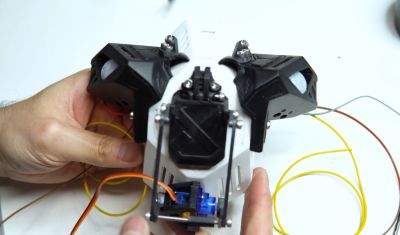The 2020 Hackaday Prize begins right now. Our global engineering challenge seeks solutions to real-world problems. If you like to come up with creative solutions to tough problems, four non-profits can use your help. We need hackers, designers, and engineers throughout the world to work on designs for conservation, disaster relief, renewable resources, and assistive devices.
 This is the seventh year of the Hackaday Prize, and like past years we want to see your ideas take shape, so share your design process in detail as a project page on Hackaday.io. Over $200,000 in prizes are at stake, with a $50,000 prize for the all around best solution which will then be designed for manufacture at Supplyframe’s DesignLab, produced in a limited run, and deployed in the field.
This is the seventh year of the Hackaday Prize, and like past years we want to see your ideas take shape, so share your design process in detail as a project page on Hackaday.io. Over $200,000 in prizes are at stake, with a $50,000 prize for the all around best solution which will then be designed for manufacture at Supplyframe’s DesignLab, produced in a limited run, and deployed in the field.
New this year is our partnership with non-profits that have each outlined challenges they are facing. Eight projects, one top finisher, and one runner up from each of the four categories of challenges, will receive $10,000 and $3,000 respectively. As with previous years, the bootstrap round offers some seed money for getting your prototype off the ground: up to $500 for each of the top twenty during early entry judging. There’s even a $5,000 wildcard prize for entries that don’t specifically address challenges from the four categories. Here’s a taste of the categories you can work on:
- Develop solutions to combat invasive species in marine and island environments, and help craft tools for protecting our natural ocean landscapes
- Low cost tools for use in the field like a heat sealers/welders, and medical devices like IV fluid warmers
- Adaptive technologies for workstations like trackballs, joysticks, and large button controllers
- Modular add-ons for earthen housing for connectivity, light, heating, and water storage
Continue reading “2020 Hackaday Prize Reveals Four Open Challenges And New Dream Team Program”





 While homemade masks are usually made from fabric [DesignMaker]’s version is much more to a hacker’s taste and includes 3D-printed parts, an Arduino Nano, PIR sensors, an SG90 servo, and some Neopixels. [DesignMaker]’s background in industrial design certainly helped him when modeling the mask as it looks just plain awesome.
While homemade masks are usually made from fabric [DesignMaker]’s version is much more to a hacker’s taste and includes 3D-printed parts, an Arduino Nano, PIR sensors, an SG90 servo, and some Neopixels. [DesignMaker]’s background in industrial design certainly helped him when modeling the mask as it looks just plain awesome.









